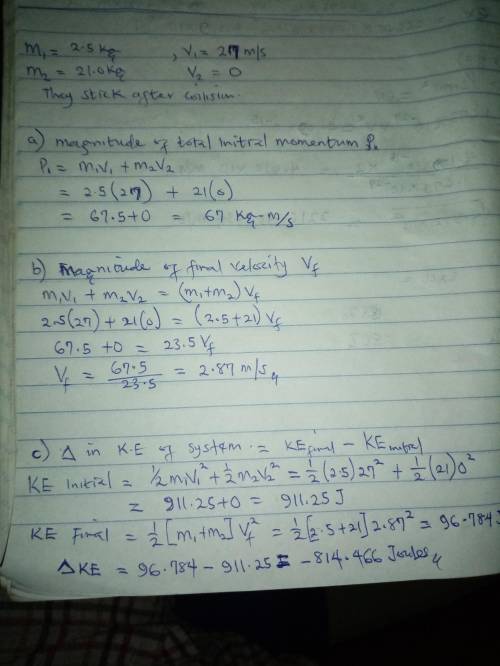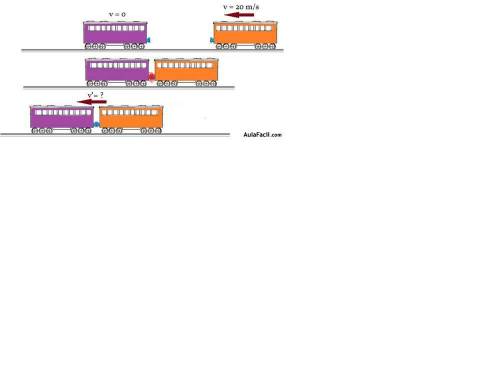
Block 1, of mass m1=2.50 kg, moves along a frictionless air track with speed v1=27.0m/s. It collides with block 2, of mass m2=21.0 kg, which was initially at rest. The blocks stick together after the collision.
A: Find the magnitude pi of the total initial momentum of the two-block system. Express your answer numerically.
B: Find vf, the magnitude of the final velocity of the two-block system. Express your answer numerically.
C: what is the change deltaK= Kfinal- K initial in the two block systems kinetic energy due to the collision ? Express your answer numerically in joules.

Answers: 1


Another question on Physics

Physics, 22.06.2019 01:20
Abanked road comer of radius 146 m is to be constructed. if the comer is designed for vehicles moving with a speed of 20.0 m/s, what should the banking angle be, in units of degrees?
Answers: 3

Physics, 22.06.2019 08:50
The experiment was repeated many years later but the gases were mixed in a different type of container. a white solid was obtained which was xenon fluoride. predict whether you think 1) krypton and 2) radon will react with fluorine. explain reasons for your predictions
Answers: 3

Physics, 22.06.2019 09:30
Which are advantages of renewable resources? check all that apply. renewable energy supplies are completely reliable everywhere. some renewable resources will never be used up. little or no waste is produced by renewable resource plants. electricity can be generated in large quantities. many renewable energy facilities have lower operating costs.
Answers: 1

Physics, 22.06.2019 12:10
Energy flows from the producer level to the level. is called
Answers: 1
You know the right answer?
Block 1, of mass m1=2.50 kg, moves along a frictionless air track with speed v1=27.0m/s. It collides...
Questions






Business, 27.06.2019 13:30


Geography, 27.06.2019 13:30

Mathematics, 27.06.2019 13:30


Social Studies, 27.06.2019 13:30

Geography, 27.06.2019 13:30



History, 27.06.2019 13:30




English, 27.06.2019 13:30

 = 67.5 N m / s
= 67.5 N m / s
 = (m₁ + m₂) v
= (m₁ + m₂) v



 = ½ (m1 + m2) v²
= ½ (m1 + m2) v²




